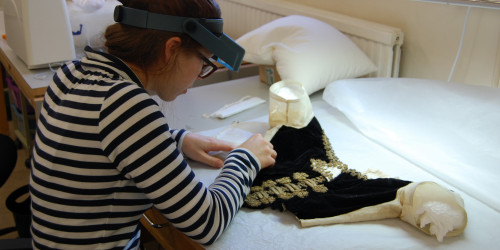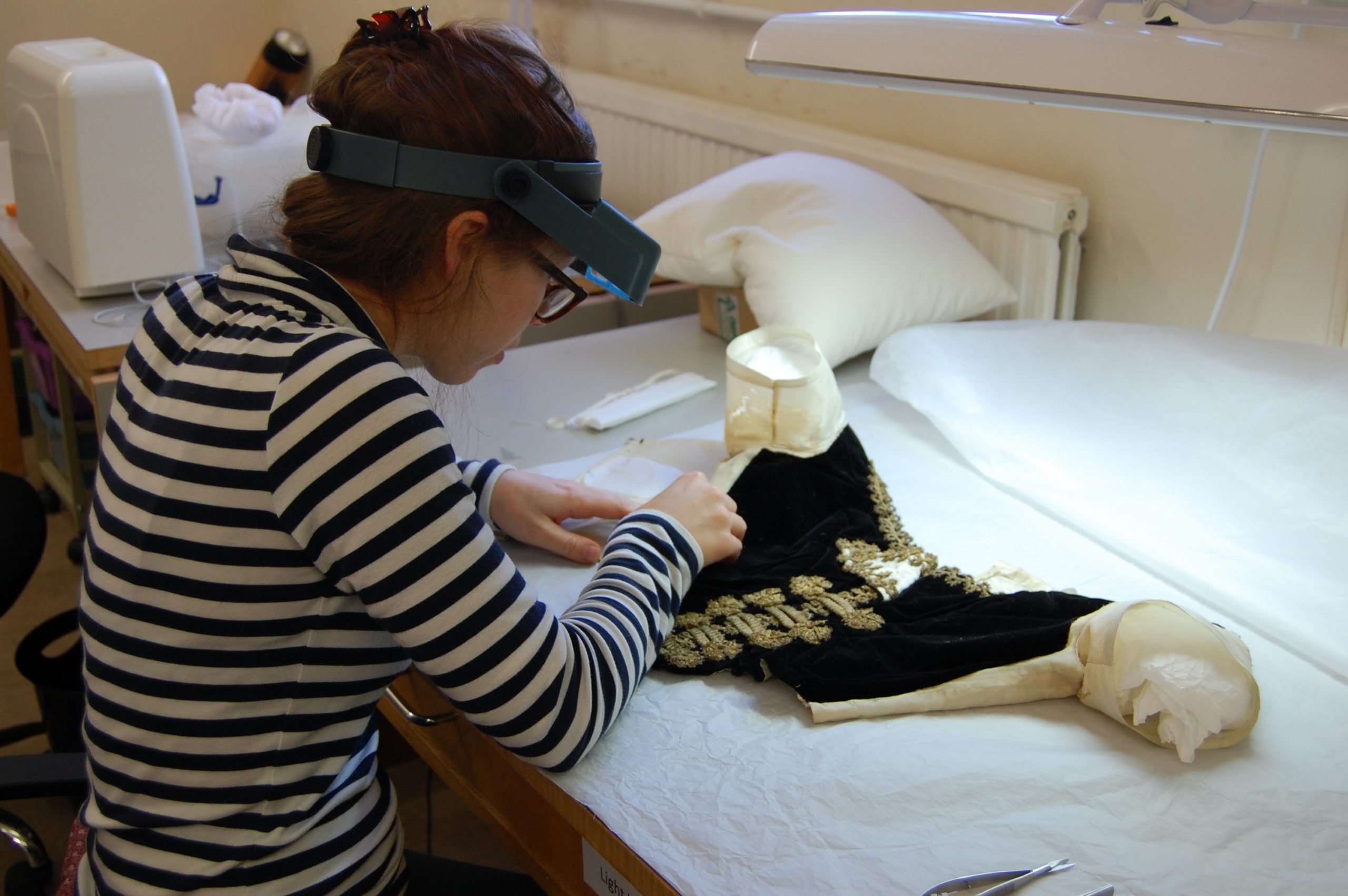
Two months on from starting at Zenzie Tinker Conservation it seems an opportune moment to take stock, reflect on my recent move from Barnard Castle to Brighton and introduce myself as the newest member of the Brighton based team. In October 2016 I completed my whirlwind yearlong ICON textile conservation internship, funded through The Heritage Lottery Fund Skills for the Future scheme, at The Bowes Museum, County Durham. This covered everything from exhibitions preparation to storage regeneration but, more importantly, bridged the tricky gap from conservation student to fully fledged textile conservator. An ICON internship was an ideal opportunity for me to develop practical skills touched on only briefly during my two year Masters at The Centre for Textile Conservation, University of Glasgow, within the museum environment under the guidance of my experienced supervisor. As well as undertaking numerous (predominantly costume based) treatments I assisted with tours, training events, workshops, answering enquiries and building public awareness of the conservation profession through blogs, posters, presentations and helping with The Conservation Advisory Network.

Post university and prior to my internship I worked for a short period at Zenzie Tinker Conservation after taking part in their Palace of Westminster student project at Portcullis House and was completely enthralled by the range and complexity of activities underway in the studio at that time. Working for a private studio comes with its own set of challenges, different to those experienced within the museum (one of the reasons I was keen to return this year). Nowadays the private studio tends to be where those projects of epic proportion end up, requiring a large, multidisciplinary team for an extensive period of time. There is no outsourcing in the private studio – you are the ‘outsourcee’ and you have to be prepared to turn your hand to anything. My initiation to Zenzie Tinker Conservation involved three days working high up on scaffolding in semi-darkness at Knole in Sevenoaks, wrapped in many layers of knitwear and stitching support webbing onto Caffoy wall hangings in the Cartoon Gallery – some of the grubbiest textiles I have ever had the pleasure of coming into contact with. Since returning to the studio I have been lucky enough to assist with the conservation of the Westminster Abbey funeral effigies, an extensive two year project for the Queen’s Diamond Jubilee Galleries currently under construction in The Abbey’s Medieval Triforium, due to open in 2018.


Working in textile conservation, be that for a public institution or private studio, is not for the faint hearted but if my winding road into this little publicised profession has taught me anything it is that resourcefulness is the name of the game. Whether you have been conserving textiles for three years or thirty, when no two objects are the same everyday is likely to bring a new set of obstacles to overcome. On the plus side you will be able to work in the most extraordinary places and on the most extraordinary objects. This last year alone I have conserved costume belonging to Empress Eugenie, wife of Napoleon III, assisted in the deinstallation of Yves Saint Laurent: Style Is Eternal and the installation of Shoes: Pleasure and Pain and cleaned a set of Morris & Co. tapestries from Westminster Abbey. I have worked on site at Portcullis House, been to a Fashion in Museums symposium at The Rijksmuseum and attended a plastics conservation course at West Dean College. I am delighted to have the opportunity to return to the Brighton studio and feel very privileged to join such a dynamic, creative team.


Bottom: Condition checking shoes from the V & A with Katy Smith for Shoes: Pleasure and Pain. The Bowes Museum

